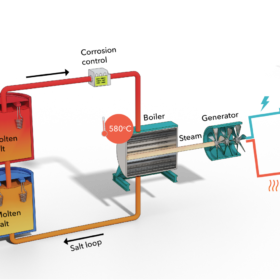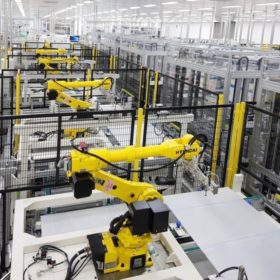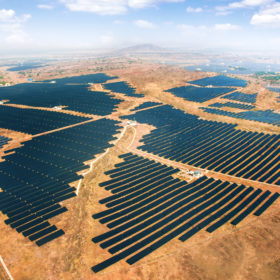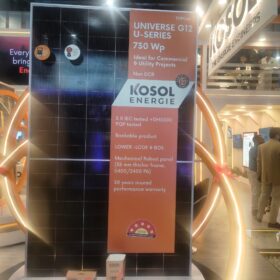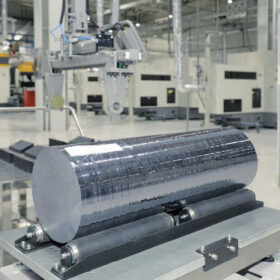Rajasthan signs pacts for over 90 GW of renewable energy projects
State-owned power producers THDC India, NTPC, NHPC, and SJVN have committed investments to build 10 GW of renewable energy capacity each. Among private firms, Reliance plans 20 GW and Axis Energy Group 28 GW of solar projects and 4 GW solar module manufacturing facility.
Storing solar power with grid-scale molten hydroxide
Seaborg Technologies, a Danish manufacturer of molten salt nuclear reactors, has turned a technology that was originally developed for nuclear power into a large-scale storage solution for wind and solar. It has developed a storage system that uses renewable energy to heat salt with electrical heaters, based on two-tank molten salt storage designs developed for concentrated solar power plants.
New renewable energy capacity addition grew 73% year-on-year in the third quarter this fiscal
India installed 3,316 MW of non-hydro renewable energy capacity in the third quarter of FY2021-22, compared to just 1,914 MW installed in the same period last year. Out of this, 93% (3,072 MW) came from solar.
Solar manufacturers request early allocation of INR 19,500 crore boost to PLI Scheme
All stakeholders are expecting the Indian Renewable Energy Development Agency Limited (IREDA) to expedite and issue letters of award to balance companies that have bid under the production-linked incentive (PLI) scheme for solar. Most players have already acquired land and some have even done the land development work and basic construction in anticipation of the award pending for the last three months.
Tapping the off-grid solar market in India
Ashutosh Verma, founder of solar appliance manufacturing company Exalta India, says the key to increasing the uptake of solar products in rural areas lies in improving the access to finance, infrastructure to retain the technology, and awareness on usage.
‘Solar and wind deployment could not now be stopped if we wanted to’
BloombergNEF’s Jenny Chase has surveyed the state of affairs in world solar for clean energy journal Joule and said the technology’s historic ability to surmount obstacles – and persistently confound analysts’ predictions – should offer a reason for hope.
Hyundai enters heterojunction PV module business
Hyundai wants to use a partnership with South Korean PV equipment supplier Jusung Engineering to commercialize solar modules based on 24.45%-efficient heterojunction solar cells.
Ecoppia robotic cleaners selected for Actis’ 150 MW solar project in Andhra Pradesh
The Israeli robotic solar cleaning specialist, which has over 3 GW of deployed projects globally, today announced it has bagged an order from global investor Actis for a 150 MW PV project in India.
How solar installations can benefit real estate developers
For real estate developers, now is the best time to install a solar energy system in their projects because solar rebates, tax credits, and incentives are at all-time highs. At the same time, a solar energy system may help them prepare for tomorrow’s specific difficulties while also saving money now.
SJVN targets 10 GW of solar projects in Rajasthan over five years
The State-owned hydropower producer has proposed an investment of INR 50,000 crore (around US$6,683 million) to develop 10 GW of solar power projects in the State in the next five years.

